Merkava-4 and T-90MS: who is who?
Tanks "Merkava-4" are the newest and most sophisticated vehicles of its class in the Israel Defense Forces. They entered the army in the middle of the last decade and gradually became the basis of armored forces. Since then, several equipment upgrades have been carried out, according to the results of which she received certain new units and capabilities. However, the update process does not stop. Already aware of the work on the new modification of the tank.
The Russian tank T-90MS is an export version of the T-90AM “Proryv”. This project started in the middle of the last decade, and the finished car was first shown in 2011 year. The project "Breakthrough" provided for a deep modernization of the existing T-90 tank, aimed at improving the technical and combat characteristics. As part of the updated machine uses modern components, due to which improved performance is achieved.
During the hypothetical Middle East conflict, the Merkava-4 tanks can only be used by the Israeli army. Despite the long-standing history, armored vehicles of the Merkava family are in service only in Israel. Other countries have shown interest in such technology, but it has not yet led to real supply. Tank T-90MS, too, has not yet managed to get into the army. Previous samples of the T-90 family were actively sold and served worldwide, but the last deep modernization has not yet been mass-produced for customers. In the future, the sale of such equipment to some Middle Eastern countries, for example, Syria, is not excluded. That it can be regarded as the operator of the T-90MS in a hypothetical war.
Mobility
One of the main factors affecting the fighting qualities of the tank, and therefore the outcome of the battle, is mobility. The armored vehicle must be able to move around the battlefield at a given speed, not paying attention to irregularities or obstacles, thereby ensuring timely access to the firing position and achieving advantages over the enemy.
Israeli Merkava-4 tanks are equipped with General Dynamics GD883 diesel engines with 1500 horsepower. The combat weight of the vehicle, depending on the configuration, exceeds 65 tons. Thus, the power density of the tank can not be higher than 23 hp. per ton. The engine is connected to an automatic hydromechanical transmission. The machine is equipped with a suspension with spring-based suspension. In this case there are means that protect the moving parts of the suspension from the negative impact of soil or stones.
In the aft compartment of the T-90MS is mounted a diesel engine B-92C2F with the power 1130 hp, connected to an automatic transmission. According to the results of the upgrade, this tank weighs 48 t, which allows to obtain a specific power of at least 23,5 hp. per ton. The undercarriage with a torsion suspension, which is traditional for domestic tank building, does not need additional protection.
The T-90MS and the Merkava-4 tanks differ little from each other in their power density. Nevertheless, the mass of cars noticeably affects their characteristics. For example, an Israeli tank on the highway accelerates to 64 km / h, while the Russian is capable of developing 70 km / h. T-90MS also has a significant advantage in power reserve. It should be noted that a large mass of “Merkavy-4” can worsen strategic mobility, limiting the choice of routes for the transfer of such equipment. However, the features of the operation of technology and the strategy of the AOI can not deal with such problems. Israeli tanks were created taking into account the operation only in their region, and they are not planned to be sent to other areas.
In general, from the available data it follows that the T-90MS is capable of showing higher mobility characteristics, both on roads and on rough terrain. A crew with good training will be able to use these advantages in battle for a quicker reach to a vantage point.
DEF
Another factor affecting the overall efficiency of the tank is its survivability, which, in turn, is made up of a combination of protection, layout solutions, etc. It should be noted that in the Russian tank construction traditionally conducted the search for the optimal combination of all the main characteristics, while Israeli engineers are focusing on protection. This leads to the characteristic differences between the two cars.
According to known data, the frontal projection of the Merkavy-4 is covered with a combined reservation with metal and ceramic parts. Other projections, to save weight, are protected by a homogeneous reservation. A characteristic feature of the Israeli tank is the large slope of the upper frontal hull detail. Also, to improve the protection of the crew used non-standard front-engine layout, in which the engine and transmission are an additional barrier to the projectile. In addition, in the habitable compartment there are no potentially flammable hydraulic systems and ammunition. The hull also takes into account the need to protect against explosive devices under the tracks or the bottom.
Previously, the AOI actively used dynamic protection systems, but the Merkava-4 has no such equipment. Nevertheless, several years ago, the mass equipment of such tanks with the Meil Ruach active defense complex, designed to intercept incoming ammunition, began. According to open data, in a modern configuration, the Merkava-4 can intercept grenades and missiles, and can also withstand the hit of various projectiles. In this case, however, the exact figures of the reservation were not disclosed.
From their predecessors, the Russian T-90MS "inherited" a combined frontal protection of armor steel, supplemented with metal and ceramic plates. Frontal projection also has a modern integrated dynamic protection "Relic". According to the developers of the tank and protection for it, the combination of combined armor and Relic allows you to withstand the impact of most modern anti-tank ammunition. The sides and hull of the hull have homogeneous protection, which is complemented by onboard screens of various types.
A modification of the T-90AM tank for the Russian army can be equipped with some elements of the Afganit active defense complex. For the export vehicle T-90MS, the use of KAZ "Arena-E" with other characteristics was proposed. When using all available means, T-90MS is able to protect itself against various attacks, with some threats being intercepted at a safe distance.
The lack of complete data on the level of protection makes it impossible to objectively compare two tanks. For this reason, they look equivalent, although some of their features may give advantages over a competitor. So, T-90MS favorably differs by the presence of a complete set in the form of combined, dynamic and active protection, complemented by cutting screens. Having no dynamic protection, the Merkava-4 boasts a special layout that increases the survivability of the crew when attacking from the front hemisphere.
Observation and management
To realize the full potential weapons Without undue risk, a modern tank must have effective means of observation and a fire control system. In addition, it requires communication systems that provide for the exchange of data on the tactical situation with the command or other combat vehicles. All these requirements were taken into account in the Russian and Israeli projects.
The latest series Merkava-4 tanks are equipped with a BAZ fire control system and BMS-type communications equipment. The MSA includes a commander panoramic sight and a gunner's optical-electronic unit, stabilized in two planes. The commander and gunner have day and night cameras, as well as a laser range finder. There are ballistic computer and automatic target tracking. According to various sources, in the light and dark of the day, a search for targets and shooting at a distance of up to 6-8 km is provided. The BMS communication system provides the exchange of data on the situation on the battlefield, reception and issuance of target designation.
The T-90MS project provides for the use of the modern Kalina. At the disposal of the commander and the gunner there are combined (day-night) sights, and on the roof of the tower there is a panoramic sight of the commander. Arms and sights are stabilized in two planes. Automation provides identification and target tracking, data generation for firing, etc. There is a set of communication facilities for interaction and data transmission at the battalion level. Provides navigation equipment using satellite signals. The Kalina SUO provides observation of the situation in any conditions and the use of weapons over the entire range of distances.
According to the available data, the BAZ and Kalina fire control systems can currently claim leadership positions and are among the best examples of their kind in the world. They are able to successfully ensure the search for targets and their subsequent destruction with the help of regular weapons. The high excellence of the SLA places special demands on crew training. In fact, the outcome of the confrontation depends not only on technology, but also on the skills of tankers.
weaponry
The ultimate goal of modern means of protection and control is the safe and effective use of weapons to defeat the enemy. “Merkava-4” and T-90MS belong to different schools of tank building, but they embody the most modern approach to the creation of weapon systems.
In the turret of the tank for AOI, an 120-mm smooth-bore gun-launcher MG253 with a barrel of 50 caliber-long is a revised version of the famous Rh-120 cannon. This product can use all existing 120-mm projectiles for tank guns that meet NATO standards. At the same time, the Israeli industry produces several types of its own ammunition. Armor-piercing shells for MG253 are capable of piercing at least 600-650 mm of homogeneous armor. The Merkavy-4 ammunition includes LAHAT guided missiles with launch through the barrel. Declared range of up to 8 km and armor penetration to 800 mm for dynamic protection.
Ammunition is fed into the gun using a semi-automatic system with a drum on 10 shells. Another 38 shots are stored in a separate piling and fed to the drum manually. It is argued that this speeds up the process of preparing for the shot by automatically searching for the necessary projectile and mechanized discharging.
The complex of additional weapons includes a pair of rifle-caliber machine guns. One is mounted on the gun mount, the second - on the roof of the tower. There is also a remote-controlled installation with a large-caliber machine gun. On the tower are smoke grenade launchers. Merkava-4, like its predecessors, can carry an 60-mm mortar.
The T-90MS project provides for the use of an 125-mm smooth-bore 2A46М-5 launcher with a barrel of 48 caliber. With the gun mates updated automatic loader. The ammunition of the gun consists of 40 shots of separate loading. 22 are located in the loader in the lower part of the crew compartment, another 8 are in the styling case. Additional stacking on 10 shots is organized in a new aft tower niche. The gun 2А46М-5 is compatible with all domestic ammunition caliber 125 mm. Armor-piercing shells of the latest models are able to penetrate up to 600-650 mm of homogeneous armor. Also T-90MS carries the 9K119М “Reflex-M” guided weapons complex with anti-tank 9М119М and 9М119М1 missiles. The range of such missiles reaches 5 km. Penetration - up to 900 mm for dynamic protection.
On one installation with a tool placed twin machine gun PKTM. The second such product is mounted on a remotely controlled combat module. In addition, the set of additional weapons includes a set of smoke grenade launchers.
In the field of weapons there is a curious situation. When using artillery shells of existing types of Merkava-4 and T-90MS can show similar characteristics and combat qualities. However, with the use of guided missiles, the situation is changing in favor of the Israeli tank. The newer LAHAT complex has advantages in the firing range, although it loses to Reflex in terms of penetration. The advantage of the Merkava-4 can be considered a larger number of machine guns, as well as the use of large-caliber M2HB.
Who will win?
A superficial study of two modern combat vehicles that may encounter in hypothetical battles in the Middle East shows a very interesting situation. Having only open information, it is impossible to assert with confidence that any of the machines in question has definite advantages over the other. In some areas, the leadership is held by the Merkava-4, while in others the T-90MS looks more successful. Based on this, it is possible to draw obvious conclusions.
In the field of mobility and strategic mobility, a lighter and more compact main tank of Russian production has great advantages. In terms of survivability, the two tanks seem to be similar, although an equal level of resistance protection is achieved in different ways. The situation is the same in the field of fire control, communications and control systems. In terms of weapons, the Merkava-4 and the T-90MS are similar, although the presence of longer-range missiles offers advantages to the Israeli tank.
A rather interesting picture is taking shape. It turns out that for the successful completion of the hypothetical battle, the T-90MS must use its advantages in mobility, and the Merkava-4 for the same purpose will have to use effective means of observation and relatively long-range missiles. In this case, both cars can hardly count on the successful defeat of the enemy with the first well-aimed shot, since they have a serious defense of various kinds.
Thus, in the collision of two tanks, the “pure” tactical-technical characteristics to some extent lose their meaning. At the same time, the importance of communications and control, as well as crew training, is growing. In such a case, the fighting machine, which earlier receives information about the presence of the enemy, will also have a greater chance of winning, and will quickly find it and, using its technical advantages, will deliver a decisive blow.
Modern military technology is characterized by high performance and a certain perfection. The development of weapons systems and other devices has led to the most serious growth in the importance of auxiliary complexes and the training of personnel. As a result, the outcome of the collision "Merkavy-4" and T-90MS will depend, primarily, on specific people. Which crews will face in a hypothetical battle is a separate question.
A direct comparison of any modern tanks from leading manufacturers can result in the most interesting findings. A modern main battle tank is not a combat unit operating independently and in isolation from other structures. The effectiveness of his combat work is directly dependent on the systems of intelligence, communications and control. In addition, the training of personnel, both tank crews and command, is of particular importance.
The situation in the Middle East does not change and there is still the risk of a full-scale armed conflict involving a number of countries in the region. In such a war will be used very different armored vehicles, consisting in service; Merkava-4 tanks and T-90 vehicles can become its participants. As you can see, the results of battles with the use of such equipment depend on many factors and are unlikely to be predictable.
On the materials of the sites:
http://otvaga2004.ru/
http://btvt.narod.ru/
http://globalsecurity.org/
http://armyrecognition.com/
http://tass.ru/
http://vesti.ru/
http://uvz.ru/
http://iai.co.il/
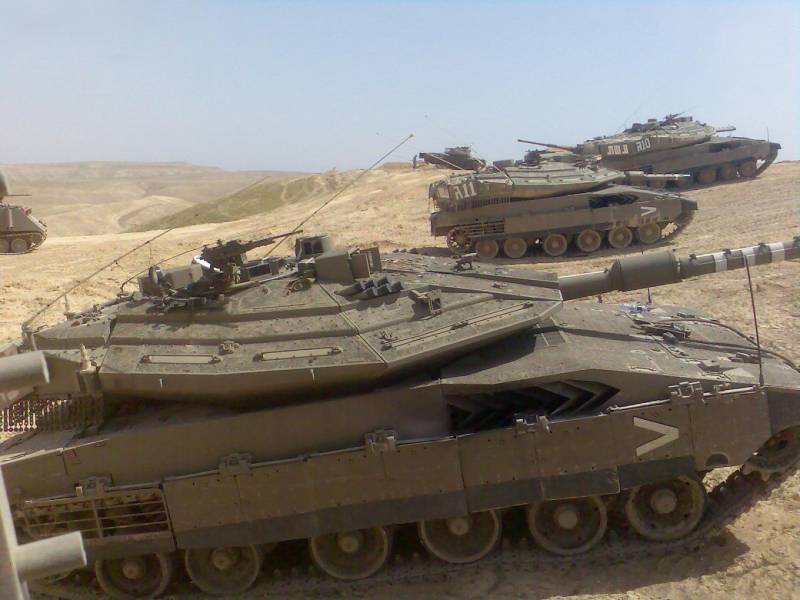
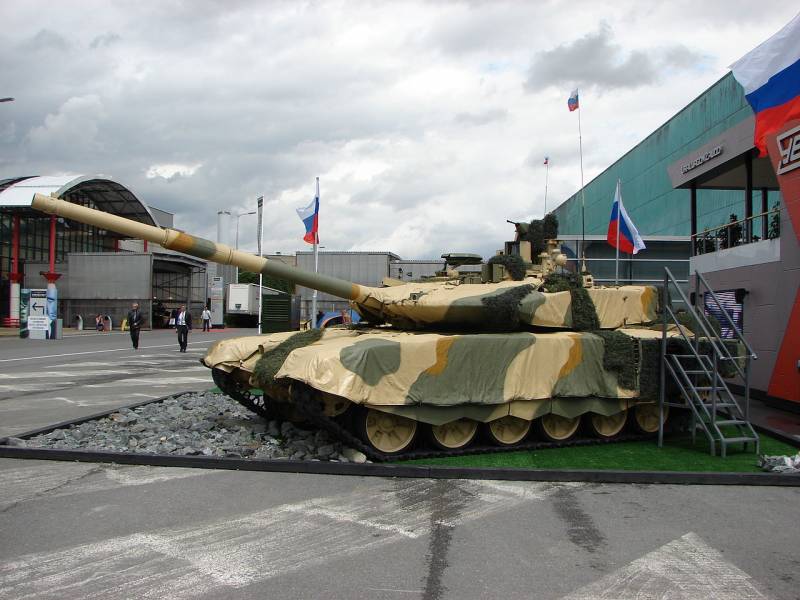
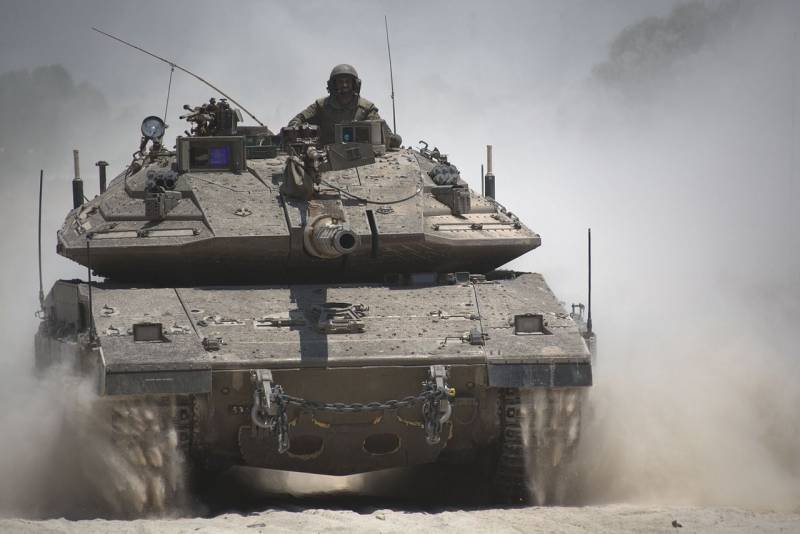
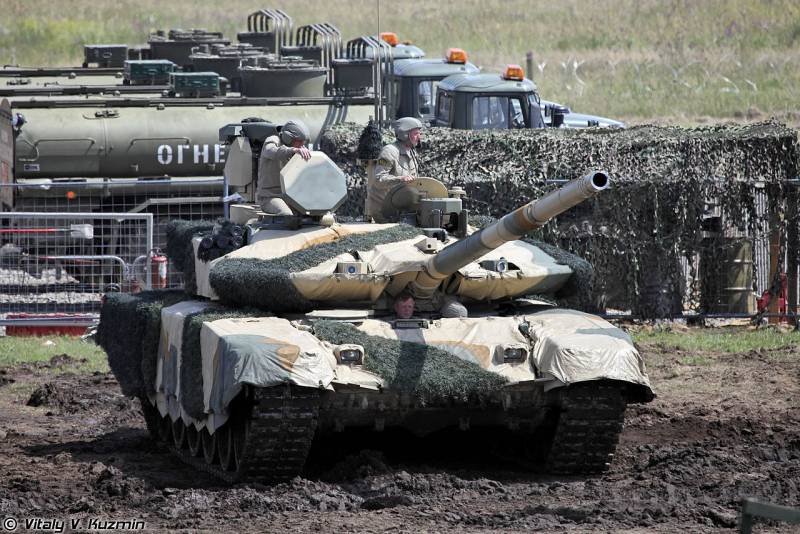

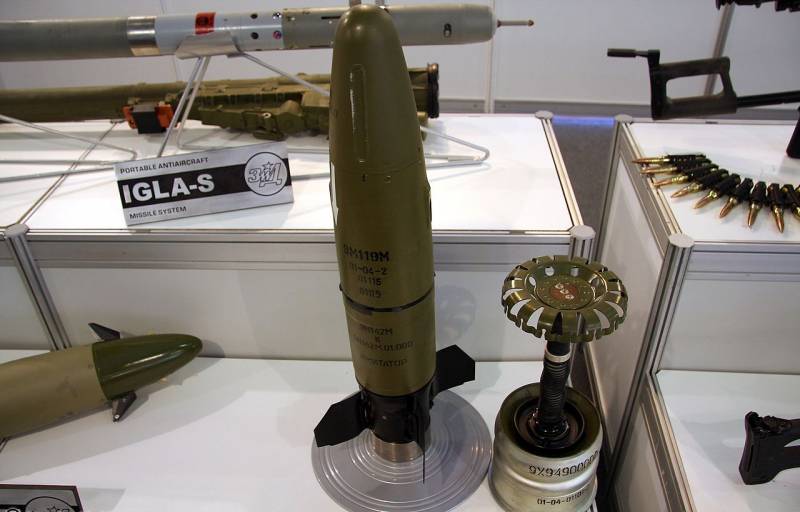
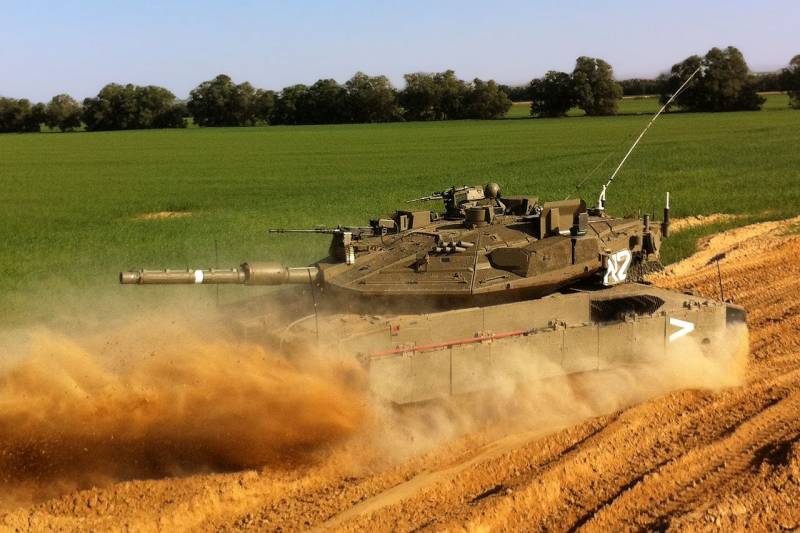
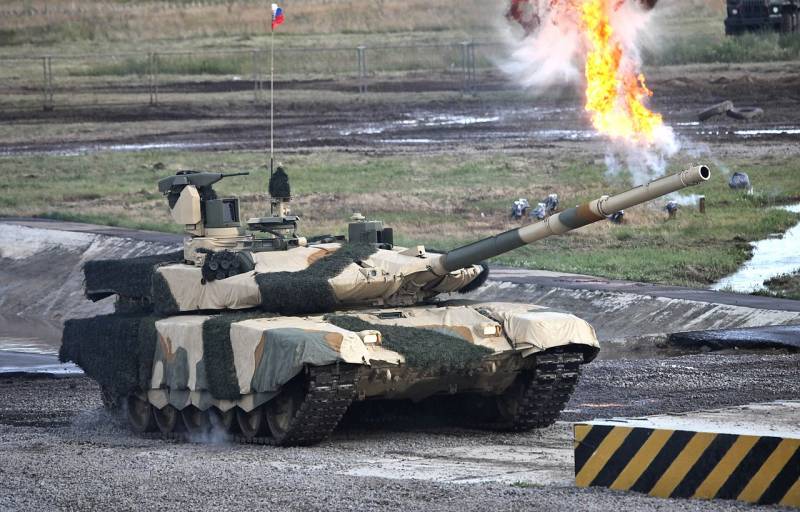
Information